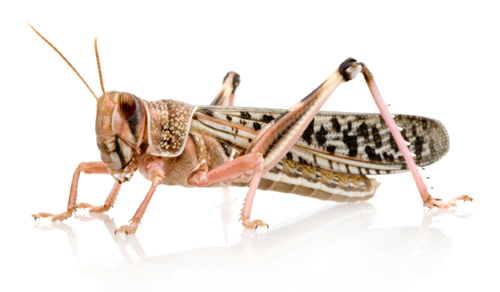Desert locusts are a species of short-horned grasshopper that can form highly mobile swarms and spread over as much as 20 percent of the world’s land mass. Comprised of more than 30 million locusts per square mile, locust swarms can travel up to 80 miles a day and impact the livelihoods of up to 10 percent of the world’s population in 60 countries by eating same amount of food in a day as several thousand people.

Photo: istockphoto
Researchers are interested in sequencing the locust’s gut wall as well as the microbial community inside the desert locust’s gut to better understand how the insect can break down plant mass. The work will determine whether or not the ability to break down lignocellulose is conferred by microbes inside the desert locust or the locust itself, and might lead to the discovery of novel enzymes that could be used for commercial biofuel production. Additionally, the genetic information could shed light on a pheromone called guaiacol, which has been linked to the swarming behavior of the locust. A key component of the pheromone is produced inside the locust’s gut and the information could be used to develop more effective biocontrols to reduce the incidence of crop destruction and famines caused by locust swarms.
Principal Investigators: Falk Warnecke, Friedrich Schiller University of Jena
Program: CSP 2010